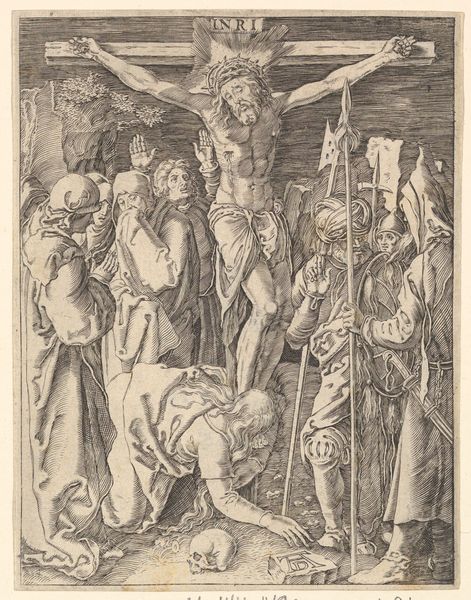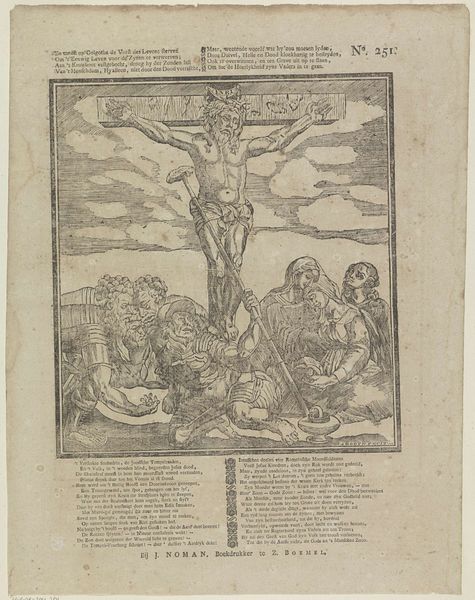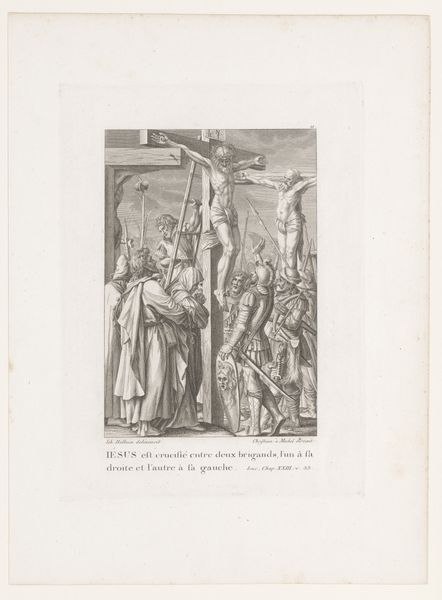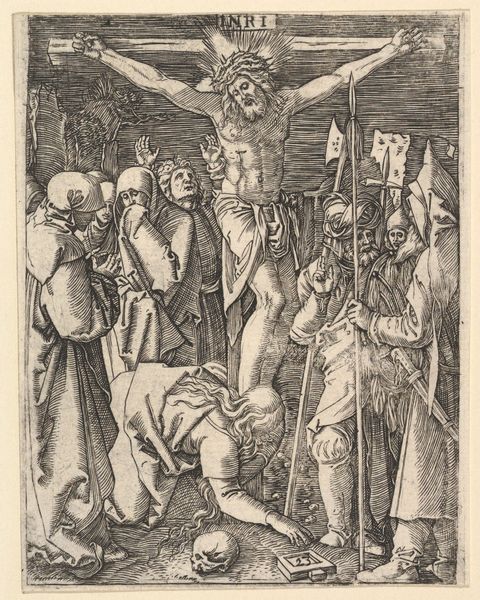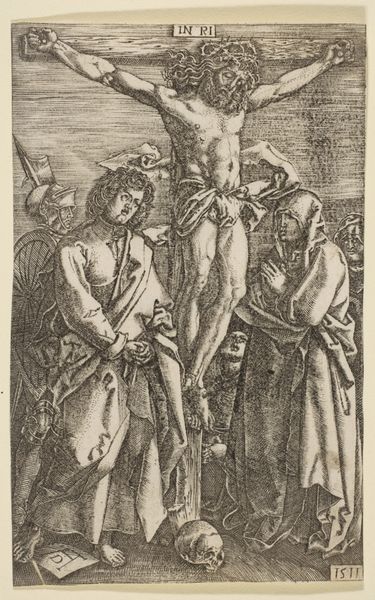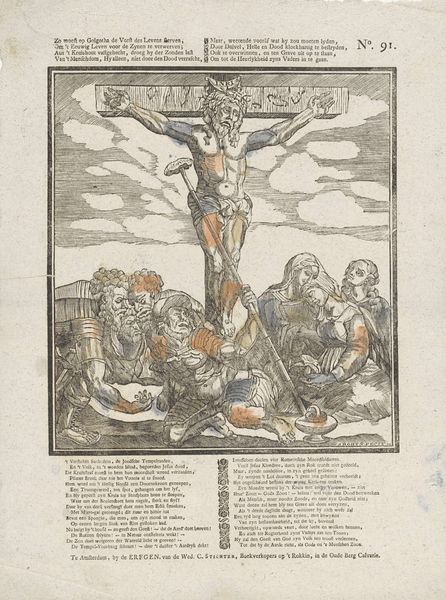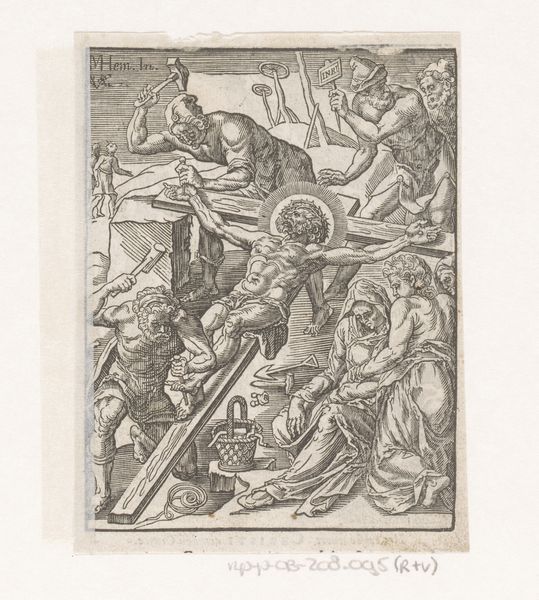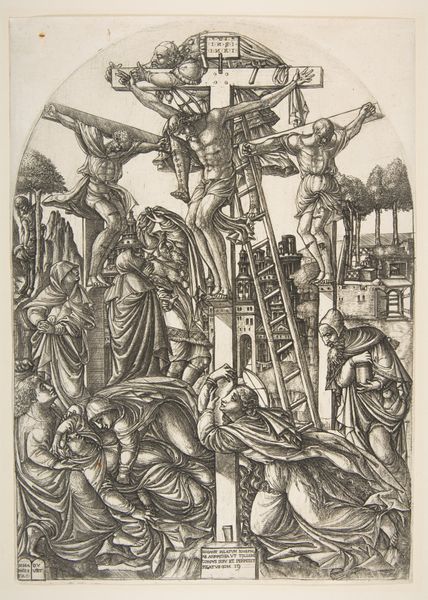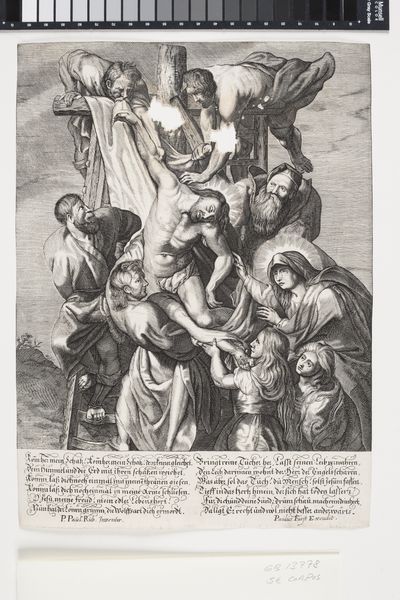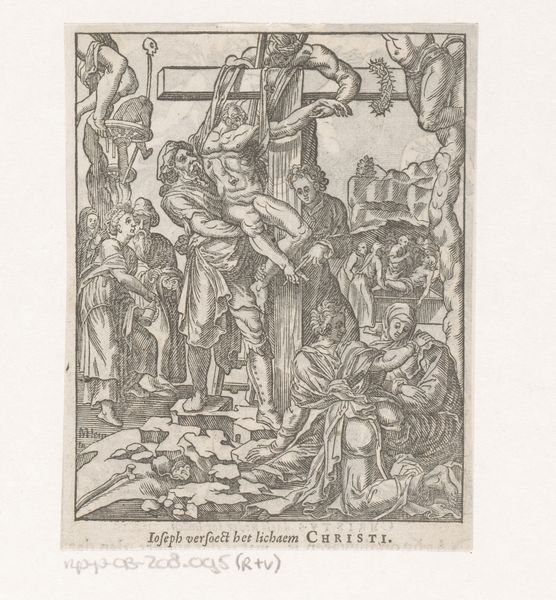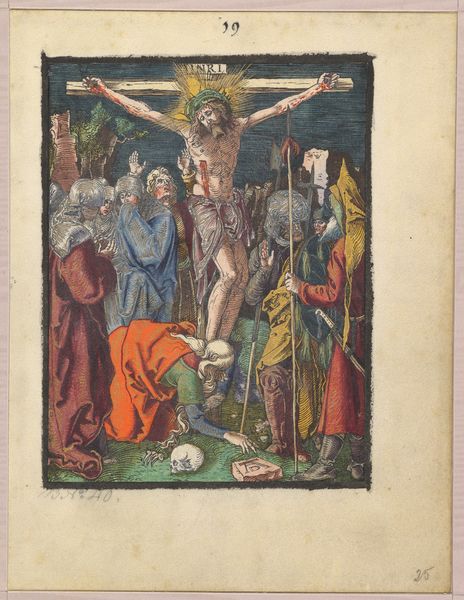
Bloed van Christus aan het kruis wordt opgevangen in bekers door drie engelen c. 1513
0:00
0:00
print, ink, engraving
# print
#
pen sketch
#
figuration
#
ink
#
line
#
history-painting
#
northern-renaissance
#
engraving
Dimensions: height 395 mm, width 414 mm, height 567 mm, width 419 mm
Copyright: Rijks Museum: Open Domain
Curator: Here we have Albrecht Dürer’s “The Blood of Christ on the Cross Being Received in Chalices by Three Angels,” an engraving from around 1513, housed here at the Rijksmuseum. Editor: It's a stark image. The thin lines give a sense of vulnerability to Christ’s figure, even as the angels are reverently collecting his blood. Curator: Indeed, the print resonates deeply with the social and religious anxieties of the time. The meticulousness with which Dürer renders the scene speaks to the prevalent concerns about salvation, sacrifice, and the human-divine relationship within a rapidly changing world. Think about the context of the Reformation brewing during this period. Editor: And considering Dürer's access to and understanding of printmaking, you can imagine how images like this traveled and shaped popular perception. Look at the layering of lines creating textures, and how that affects the way we understand light falling on skin, the folds of cloth...it's a material study in conveying suffering. Curator: Absolutely, the labor put into the material process enhances the thematic focus on sacrifice and redemption. Dürer wasn't merely creating an aesthetic image; he was crafting a profound statement about faith. Also, observe how Dürer places the textual inscription alongside the image, guiding the viewer’s interpretation. He merges image and text as intertwined elements for spiritual contemplation, much like the medieval illuminated manuscripts that paved the way. Editor: This focus on precise detail is really noticeable when looking at the cups and how they collect the blood—the labor behind making these liturgical objects that the angels collect it with becomes really apparent. The sacred function dictates a care and refinement in execution; I am interested in what this reveals about religious ritual. Curator: Yes! Furthermore, the very act of collecting the blood in chalices connects to the ritual of the Eucharist. Consider the gendered representation; angels are usually seen as androgynous figures, yet these have traditionally feminine qualities that subtly point to ideas of purity and nurture in relation to religious sacrifice and devotion. Editor: Seeing the emphasis placed on production and symbolic value, it underscores for me the complex intertwining of faith, labour and commodity culture, revealing an artist keenly aware of the power of visual and material culture to shape understanding. Curator: Precisely. It shows how deeply embedded these artistic representations were in the era's complex dialogues surrounding identity, belief, and social order. Editor: Examining process and object here reveals a complex reflection on labour’s relation to both devotion and widespread social themes that still reverberate today.
Comments
No comments
Be the first to comment and join the conversation on the ultimate creative platform.
